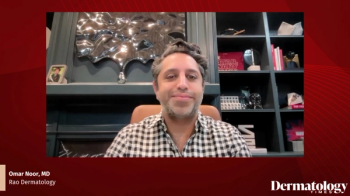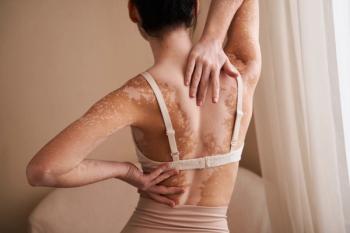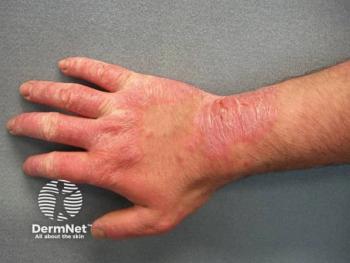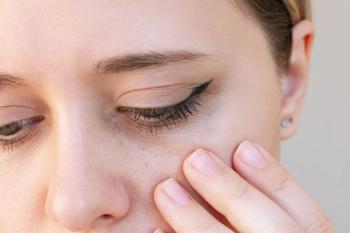
Botanical-Based Nutraceutical Improves Acne
Key Takeaways
- Acne vulgaris is influenced by systemic factors like stress, hormonal changes, and diet, beyond localized inflammation.
- Holistic treatment approaches, including botanicals, vitamins, and probiotics, show promise in addressing systemic acne contributors.
Discover how a novel nutraceutical significantly improves mild to moderate acne in a 12-week clinical trial, offering a holistic approach to skin health.
Acne vulgaris (AV) has traditionally been viewed as a localized inflammatory disorder of the pilosebaceous unit (PSU), largely managed through topical or systemic agents targeting follicular hyperkeratosis, sebum overproduction, Cutibacterium acnes overgrowth, and localized inflammation.1 However, evolving research suggests that systemic contributors—such as stress, hormonal fluctuations, dietary factors, dysbiosis of the microbiome, oxidative stress, and immune dysregulation—also significantly influence acne pathogenesis. These factors may trigger or amplify the cutaneous inflammation observed in acne by upregulating systemic immuno-inflammatory pathways, leading to a renewed interest in holistic treatment modalities.2
Recent therapeutic paradigms have shifted toward integrating systemic lifestyle and dietary interventions into acne management. Clinical interest has grown in the potential of botanicals, vitamins, minerals, and probiotics to influence the systemic roots of acne.3 Substances such as holy basil (for stress modulation), berberine (for metabolic support), zinc and vitamin D (for anti-inflammatory effects), and probiotics (for microbiome balance) have shown promise in early investigations.4 Based on this framework, a multi-targeting nutraceutical formulation, Nutrafol SKIN, was developed to address acne from a systemic perspective.
Methods and Materials
To assess the efficacy and safety of this approach, a 12-week randomized, double-blind, placebo-controlled trial was conducted involving 93 adult women with mild to moderate non-nodulocystic acne.5 Subjects were randomized to receive either the active supplement or a placebo, alongside a standardized skincare regimen. The primary endpoint was improvement in the Investigator Global Assessment (IGA) score, while secondary endpoints included changes in lesion counts, skin quality assessments, self-reported outcomes, and objective skin measurements.
Results
The study found a statistically significant improvement in IGA scores in the active group compared to the placebo group at 12 weeks (p = 0.02). Nearly half (44%) of the active group achieved a "clear" or "almost clear" rating by study end, compared to only 13% in the placebo group. While inflammatory and non-inflammatory lesion counts decreased significantly from baseline in the active group, these differences were not statistically significant when compared to the placebo group. Nevertheless, the consistent downward trend in lesion counts over time suggests potential for greater effect with prolonged treatment duration.
In addition to acne reduction, subjects receiving the active nutraceutical showed significant improvements in various skin parameters—such as post-inflammatory erythema (PIE), scarring, smoothness, softness, and overall appearance—based on blinded investigator assessments. These benefits contrast with some side effects seen in conventional acne treatments, such as dryness and irritation.
Self-reported outcomes aligned with objective findings. Participants in the active group more frequently reported improvements in skin tone, acne visibility, and overall skin health. These benefits were not statistically significant compared to placebo in all cases, which may reflect the influence of placebo effects—a known phenomenon in acne studies.
Importantly, the supplement was well tolerated. Only 1 subject withdrew due to moderate nausea, which resolved after discontinuation. No other adverse events were reported.
Conclusion
This study supports the hypothesis that addressing systemic drivers of acne through a nutraceutical approach can lead to significant improvements in skin health. While more research is warranted to evaluate long-term benefits and effects in different acne severities, this trial adds to the growing body of evidence supporting comprehensive, system-wide acne management strategies that go beyond the PSU. Researchers suggested future studies may benefit from extended treatment durations and inclusion of broader participant demographics to fully elucidate the role of such interventions in acne care.
References
- Eichenfield DZ, Sprague J, Eichenfield LF. Management of acne vulgaris: A review. JAMA. 2021;326(20):2055-2067. doi:10.1001/jama.2021.17633
- Burgess C, Gold M, Farris PK, Hazan A, Raymond I. A novel systems-wide approach in addressing acne with a multi-targeting nutraceutical. J Drugs Dermatol. 2024;23(3):160-167. doi:10.36849/jdd.8138
- Khormi G, Aldubayyan N, Hakami M, Daghriri S, Aqeel S. Impact of lifestyle and dietary habits on the prevalence of acne vulgaris: A cross-sectional study from Saudi Arabia. Cureus. 2024;16(3):e57200. Published 2024 Mar 29. doi:10.7759/cureus.57200
- Lopresti AL, Smith SJ, Metse AP, Drummond PD. A randomized, double-blind, placebo-controlled trial investigating the effects of an Ocimum tenuiflorum (Holy Basil) extract (HolixerTM) on stress, mood, and sleep in adults experiencing stress. Front Nutr. 2022;9:965130. Published 2022 Sep 2. doi:10.3389/fnut.2022.965130
- Draelos Z, Harper J, Farris PK, Hazan A, Raymond I. A 12-week randomized, double-blind, placebo-controlled trial for the efficacy and safety of a novel nutraceutical for mild-to-moderate acne. J Cosmet Dermatol. 2025;24(5):e70220. doi:10.1111/jocd.70220
Newsletter
Like what you’re reading? Subscribe to Dermatology Times for weekly updates on therapies, innovations, and real-world practice tips.



















